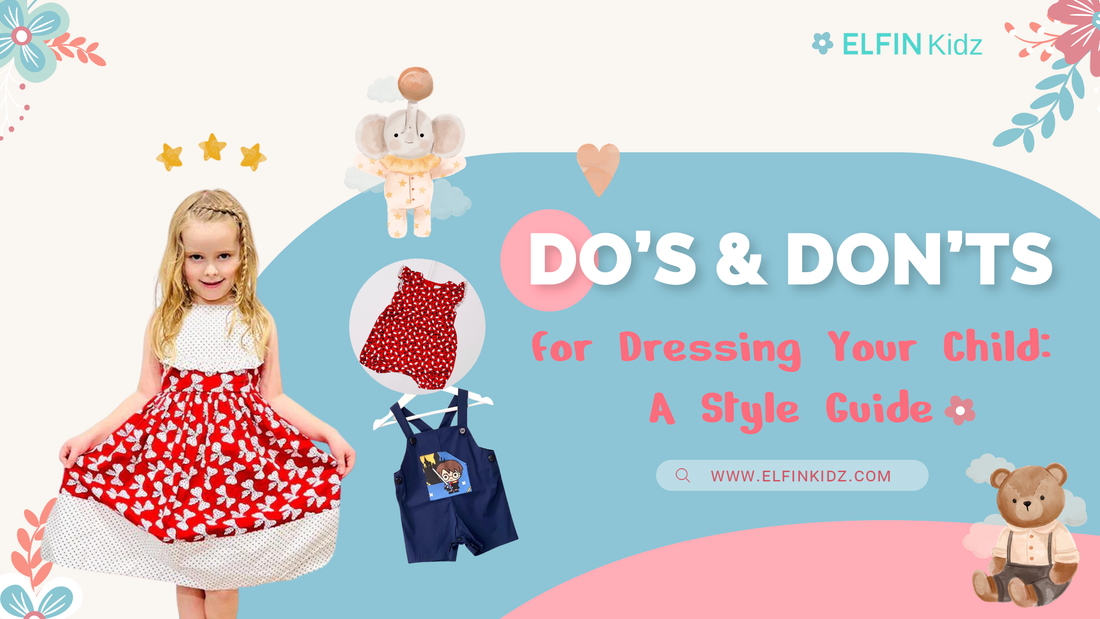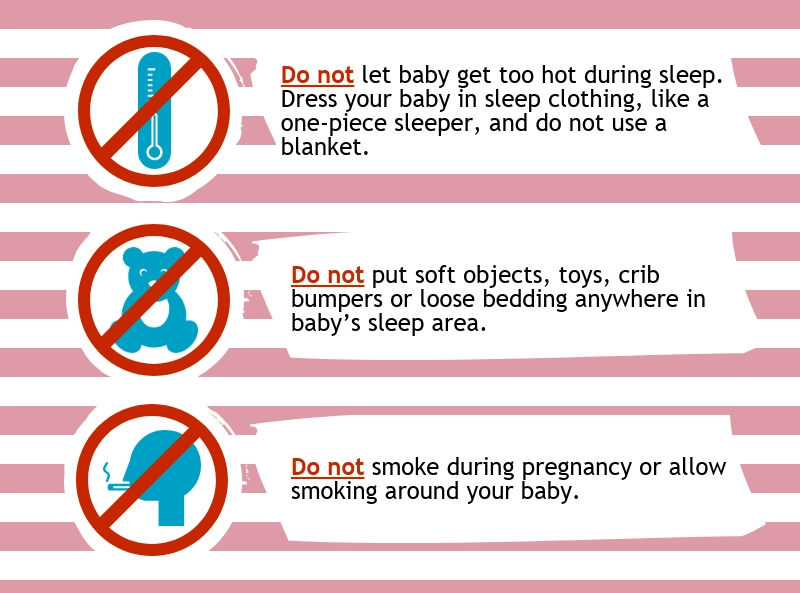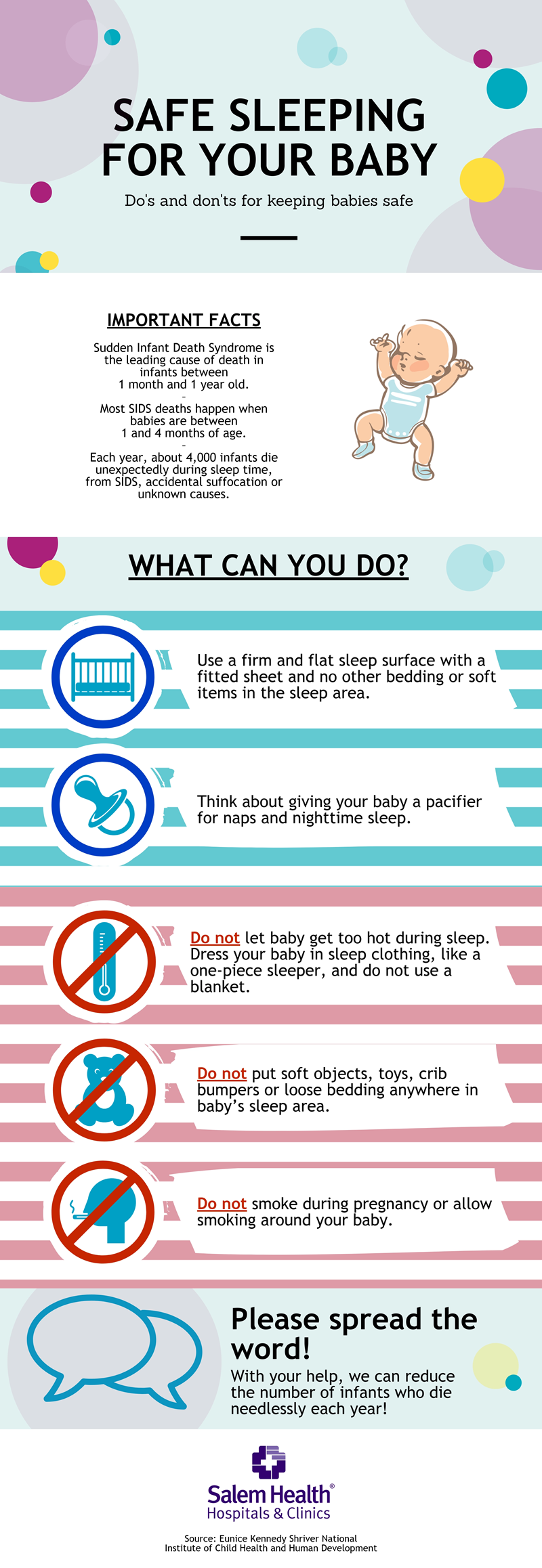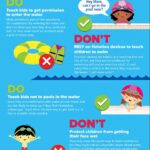Dressing your kids can be a joyful yet challenging task. Ensuring they look good while staying comfortable is key.
Understanding the dos and don’ts of kids’ clothing can make this easier. Parents often face the dilemma of choosing appropriate outfits for various occasions. With so many options and factors to consider, it’s easy to feel overwhelmed. This guide will help you navigate these choices.
From selecting the right fabrics to avoiding common mistakes, you’ll find practical tips here. Learn how to balance style and comfort effortlessly. By the end, you’ll be equipped with the knowledge to dress your kids confidently and appropriately for any event. Let’s explore the essential dos and don’ts of kids’ clothing.
Choosing Comfortable Fabrics
Choosing the right fabrics for kids’ clothing can make a big difference in their comfort. Comfortable fabrics can help kids stay happy and active throughout the day. This section will guide you on how to pick the best fabrics for your little ones.
Natural Vs Synthetic Materials
Natural fabrics like cotton and wool are breathable. They allow air to circulate, keeping kids cool. Cotton is soft and gentle on the skin. Wool is excellent for colder months because it traps heat.
Synthetic fabrics like polyester and nylon are durable. They can handle rough play but may not be as breathable. Synthetic materials can sometimes cause skin irritation. They often trap heat and moisture, making kids uncomfortable.
Seasonal Fabric Choices
In summer, choose lightweight fabrics like cotton. Cotton allows sweat to evaporate, keeping kids cool. Linen is also a good choice for summer. It is light and breathable, perfect for hot days.
For winter, opt for warmer fabrics like wool and fleece. Wool keeps kids warm by trapping body heat. Fleece is soft and provides excellent insulation. Layering with these fabrics can keep kids cozy during cold months.
In spring and fall, consider versatile fabrics like jersey and light knits. These materials provide warmth but are also breathable. They are great for the changing temperatures of these seasons.
Prioritizing Safety
Ensuring children’s safety is crucial when selecting their clothing. Parents must consider potential hazards. This helps keep kids safe and comfortable. Below are key safety tips to remember.
Avoiding Choking Hazards
Buttons, sequins, and beads can pose choking risks. Avoid outfits with small, detachable parts. Check the durability of decorations. Make sure they are securely attached. Loose buttons should be fixed or removed. Drawstrings on hoods can also be dangerous. These can get caught and cause injury. Opt for clothes without drawstrings or remove them.
Fire-resistant Materials
Choose clothes made from fire-resistant materials. These can prevent severe injuries. Check labels for fire safety information. Avoid loose-fitting clothes around open flames. Tight-fitting clothes are safer. They reduce the risk of catching fire. Consider pajamas made from flame-resistant fabric. This is especially important for sleepwear. Safety should always come first.
Sizing And Fit
Finding the right size and fit for kids’ clothing can be challenging. Children grow fast, and their sizes change often. Proper sizing ensures comfort and can save money in the long run. Here are some essential tips for getting the perfect fit for your kids.
Growth Spurts
Children experience growth spurts often, especially in their early years. Keeping track of these changes helps in buying the right size.
- Check their measurements every few months.
- Buy clothes that have some room for growth.
- Consider the season when buying larger sizes.
Proper Measurements
Taking proper measurements ensures a good fit. Use a measuring tape and follow these steps:
- Measure the chest around the fullest part.
- Measure the waist at the narrowest point.
- Measure the hips around the widest part.
- Measure the inseam from the crotch to the ankle.
| Measurement | How to Measure |
|---|---|
| Chest | Wrap the tape around the fullest part of the chest. |
| Waist | Wrap the tape around the narrowest part of the waist. |
| Hips | Wrap the tape around the widest part of the hips. |
| Inseam | Measure from the crotch to the ankle. |
Use these measurements to compare with size charts. Ensure a proper fit by checking the manufacturer’s guidelines. Not all brands have the same sizing.

Credit: www.elfinkidz.com
Budget-friendly Shopping
Shopping for kids’ clothing can be a fun experience. But it can also be a strain on your budget. Fortunately, there are many ways to save money while ensuring your child looks stylish and feels comfortable. Here are some budget-friendly shopping tips to help you get the most value for your money.
Second-hand Options
Buying second-hand clothes is a great way to save money. Many second-hand stores offer high-quality items at a fraction of the original price. You can find gently used clothes that look almost new. This is not only budget-friendly but also environmentally friendly.
- Check local thrift stores
- Explore online marketplaces
- Join community buy/sell/trade groups
Remember to check for any stains or damages. Always wash the clothes before your child wears them.
Sales And Discounts
Keep an eye out for sales and discounts. Many stores offer significant discounts during certain times of the year. Seasonal sales, clearance sales, and holiday sales are the best times to shop. Sign up for newsletters to get notified about upcoming sales.
Here are some tips to maximize your savings:
- Shop during end-of-season sales
- Use discount codes and coupons
- Take advantage of loyalty programs
Consider shopping off-season. Buy winter clothes in summer and summer clothes in winter. This way, you can get the best deals.
| Store | Type of Sale | Discount Percentage |
|---|---|---|
| Store A | Clearance Sale | Up to 70% off |
| Store B | Seasonal Sale | Up to 50% off |
Always plan your shopping to take full advantage of these discounts. This will help you stick to your budget while ensuring your child has everything they need.
Balancing Style And Function
Finding the right balance between style and function in kids’ clothing can be challenging. Parents want their children to look good, but it’s equally important that the clothes are practical. Ensuring that kids’ clothes are both stylish and functional helps children feel comfortable and confident.
Trendy Vs Timeless
Trendy clothes often catch the eye with their modern designs and vibrant colors. They can make a child look fashionable and up-to-date. But trends change quickly. What is popular today might be out of style tomorrow.
Timeless clothing, on the other hand, remains stylish season after season. Classic pieces like denim jeans, plain t-shirts, and simple dresses always look good. They are a smart investment because they never go out of style.
Mixing trendy items with timeless pieces is a good strategy. This way, children can enjoy the best of both worlds without constantly needing new clothes.
Comfortable Designs
Comfort is key when it comes to kids’ clothing. Children need to move freely as they play and explore. Clothes should not restrict their movement. Soft fabrics like cotton are gentle on the skin and allow for breathability.
Elastic waistbands, stretchy materials, and loose fits are great options. These designs provide comfort and ease of movement. Avoid clothes with many buttons, zippers, or tight fittings. They can be uncomfortable and make dressing more difficult for kids.
Choosing comfortable designs ensures children can enjoy their day without any discomfort. It also makes parents’ lives easier, knowing their kids are happy in their clothes.
Layering Techniques
Layering clothes for kids can be an art. It keeps them comfortable and stylish. Learn the dos and don’ts of layering to ensure your child stays happy and healthy.
Weather-appropriate Layers
Dress your kids in layers that suit the weather. On cold days, start with a moisture-wicking base layer. This keeps sweat away from the skin. Add a warm middle layer like a fleece or sweater. Finish with a waterproof and windproof outer layer. This setup blocks wind and rain while keeping warmth in. For warmer weather, use light layers. A cotton t-shirt under a light jacket works well. It allows easy removal as the temperature rises.
Mix And Match Basics
Invest in versatile pieces. Neutral colors like white, black, and grey match almost anything. Choose simple designs that can be dressed up or down. This makes it easy to create different looks. Layer a plain t-shirt with a colorful hoodie. Or pair a basic long-sleeve shirt with a patterned vest. Mixing and matching saves time and money. It also helps kids develop their own style. Let them pick their favorites. This encourages creativity and independence.
Caring For Kids’ Clothes
Caring for kids’ clothes can feel like a daunting task. These tiny garments endure a lot. From spills to grass stains, they see it all. Proper care ensures they last longer. Plus, it keeps them looking fresh and vibrant. Here are some essential tips for making the most of your child’s wardrobe.
Laundry Tips
Separate clothes by color before washing. Whites, darks, and colors should go in different loads. This prevents colors from bleeding onto lighter fabrics. Use cold water for most washes. It saves energy and reduces shrinkage. Choose a gentle detergent. Kids’ skin is sensitive. Harsh chemicals can cause irritation. Always read the care labels on clothes. Follow the instructions for the best results.
Stain Removal
Treat stains as soon as possible. Fresh stains are easier to remove. Blot, don’t rub, to avoid spreading the stain. For protein-based stains like milk or blood, use cold water. For grease stains, dish soap works wonders. Apply it directly to the stain. Let it sit before washing. For ink or marker stains, rubbing alcohol can help. Dab it gently on the stain. Then rinse with cold water.
Eco-friendly Choices
Choosing eco-friendly clothing for kids is essential. It helps protect the environment. It ensures a better future for our children. Parents can make a big difference by making smart clothing choices. Here are a few tips to help you choose eco-friendly options for your kids’ wardrobe.
Sustainable Brands
Many brands focus on sustainability. They use organic materials and ethical practices. These brands are committed to reducing their environmental impact. Here are a few tips to identify and choose sustainable brands:
- Look for certifications like GOTS (Global Organic Textile Standard).
- Choose brands that use recycled materials.
- Support companies that practice fair trade.
Supporting these brands not only helps the environment. It also ensures better working conditions for workers.
Recycling And Upcycling
Recycling and upcycling are great ways to extend the life of kids’ clothes. Recycling involves turning old clothes into new materials. Upcycling means creatively reusing old clothes. Here are some tips for recycling and upcycling kids’ clothes:
- Donate gently used clothes to local charities.
- Use old clothes for craft projects with your kids.
- Turn worn-out clothes into rags or cleaning cloths.
- Participate in clothing swap events with other parents.
These practices help reduce waste. They also teach kids the importance of sustainability.
Footwear Essentials
When dressing kids, choosing the right footwear is crucial. The right pair supports their growing feet, provides comfort, and helps prevent injuries. Let’s dive into the essentials of kids’ footwear, focusing on proper fit and seasonal shoes.
Proper Fit
Children’s feet grow fast. Ensuring a proper fit is essential. Shoes should be snug but not tight. A thumb’s width of space between the longest toe and the shoe’s end is ideal.
Check the fit regularly. Kids may not always tell you if their shoes are uncomfortable. Look for signs like red marks, blisters, or complaints about foot pain.
Consider the width as well. Feet vary in width. Some shoes cater to narrow or wide feet. A proper fit prevents issues like bunions or ingrown toenails.
| Age Group | Frequency of Shoe Check |
|---|---|
| 0-3 years | Every 2-3 months |
| 4-6 years | Every 4-6 months |
| 7-10 years | Every 6 months |
Seasonal Shoes
Different seasons require different footwear. Summer needs breathable shoes. Sandals or lightweight sneakers are great choices. Ensure they have good grip to prevent slips.
For winter, insulated and waterproof boots keep feet warm and dry. Look for non-slip soles to avoid falls on icy surfaces.
Spring and autumn call for versatile options. Sneakers or closed-toe shoes with good ventilation work well. They provide comfort and protect feet from unpredictable weather.
- Summer: Sandals, lightweight sneakers
- Winter: Insulated boots, waterproof shoes
- Spring/Autumn: Versatile sneakers, closed-toe shoes
Having the right footwear for each season ensures kids can play and explore comfortably. Happy feet make for happy kids!
Special Occasion Outfits
Dressing kids for special occasions can be a delightful experience. These moments, whether they are weddings, birthdays, or holidays, call for outfits that make kids look adorable and feel special. Yet, it’s important to strike the right balance between style and comfort. Here are some dos and don’ts to help you choose the perfect special occasion outfits for kids.
Festive Attire
Festive attire is all about vibrant colors and elegant designs. Choose bright colors like red, green, or gold for festive events. These colors are eye-catching and perfect for joyful occasions. Opt for classic styles such as frilly dresses for girls and mini suits for boys. This adds a touch of elegance.
Avoid too much glitter or heavy embellishments. These can be uncomfortable for kids. Simple yet stylish is the way to go. Too much decoration can also make the outfit hard to move in, which is crucial for active kids.
Comfort Considerations
Comfort should be a top priority, even for special occasions. Soft fabrics like cotton or linen are gentle on the skin. Avoid synthetic materials that can cause itching or discomfort. Ensure the outfit fits well. A well-fitted outfit allows easy movement.
Check for tags or seams that might irritate the skin. Comfortable shoes are also essential. Kids will be on their feet a lot, so avoid shoes that are too tight or have high heels.
| Do’s | Don’ts |
|---|---|
| Choose bright colors | Avoid heavy embellishments |
| Select soft fabrics | Stay away from synthetic materials |
| Ensure a good fit | Avoid tight shoes |
Remember, kids look best when they are comfortable and happy. Follow these simple tips to make your child’s special occasion outfit both stylish and comfortable.
Dressing For Playtime
Kids love to play. They run, jump, and climb. Playtime is fun but can be tough on clothes. Parents need to choose the right outfits. Let’s talk about the dos and don’ts of kids’ clothing for playtime.
Durable Fabrics
Durable fabrics are essential for kids’ playtime clothes. They need to withstand rough use. Look for materials like denim, canvas, and heavy cotton. These fabrics resist wear and tear.
- Denim: Great for pants and jackets.
- Canvas: Ideal for shorts and overalls.
- Heavy cotton: Perfect for t-shirts and dresses.
Avoid delicate fabrics. Silk and lace can rip easily. Save these for special occasions.
Easy-to-wash Items
Easy-to-wash items are a must. Kids get dirty. Mud, grass stains, and food spills happen. Choose clothes that are machine washable. Check the labels before buying.
- Machine washable: Saves time and effort.
- Stain-resistant: Keeps clothes looking new.
- Quick-dry: Ready to wear again soon.
Avoid clothes with special washing instructions. Hand-wash or dry-clean only clothes are not practical. Keep it simple.

Credit: www.salemhealth.org
Weather-specific Tips
Choosing the right clothes for kids based on the weather ensures their comfort and health. Different seasons call for different types of clothing. Here are some key tips to consider for both winter and summer.
Winter Wear
Winter can be harsh on young ones. Ensure they wear layers. Start with a thermal base layer. Add a warm sweater or fleece. Finish with a waterproof jacket. Don’t forget a warm hat, gloves, and socks. Keep their feet dry with waterproof boots. Avoid cotton as it retains moisture. Opt for wool or synthetic fabrics. These keep them warm and dry. Always check for signs of overheating.
Summer Clothing
Summer calls for light and breathable clothes. Choose cotton or linen fabrics. These allow the skin to breathe. Opt for light colors. They reflect sunlight and keep kids cool. Ensure they wear a hat. Protect their eyes with UV-protected sunglasses. Always apply sunscreen on exposed skin. Keep them hydrated throughout the day. Avoid tight clothing. It can cause rashes and discomfort.
Involving Kids In Choices
Kids love to feel part of the decision-making process. Involving them in choosing their clothes helps them develop a sense of style. It also makes them more confident and happy with their choices. Let’s explore the dos and don’ts when involving kids in clothing choices.
Encouraging Self-expression
Encouraging self-expression is key to helping kids develop their own style. Let them pick out clothes that reflect their personality. This can be a fun and creative process for them. Here are some tips:
- Let them choose colors: Allow kids to pick their favorite colors. This helps them feel more connected to their outfits.
- Encourage mix-and-match: Teach kids to combine different pieces. This builds their confidence and creativity.
- Respect their choices: Even if their choices are unusual, support them. This boosts their self-esteem.
Remember, the goal is to let them express who they are. It’s okay if their style is different from yours. Celebrate their uniqueness!
Practical Decision-making
While self-expression is important, practical decision-making is also crucial. Guide your kids to make sensible clothing choices. Consider these points:
| Aspect | Tips |
|---|---|
| Weather | Discuss how to dress for different weather conditions. Explain why some clothes are better for certain climates. |
| Occasions | Teach kids about appropriate clothing for various events. Help them understand why some clothes are best for specific activities. |
| Comfort | Emphasize the importance of comfort. Kids should feel good in what they wear. |
Balancing self-expression with practical decision-making helps kids learn valuable life skills. They will appreciate the importance of both style and functionality in their clothing.

Credit: www.salemhealth.org
Frequently Asked Questions
What Fabrics Are Best For Kids’ Clothing?
Soft, breathable fabrics like cotton are best. They prevent skin irritation and keep kids comfortable.
How Do I Choose The Right Size For Kids’ Clothes?
Use the size chart and measure your child. Sizes vary by brand, so always check.
Are There Specific Clothes For Different Seasons?
Yes, choose light clothes for summer and heavier fabrics for winter. Layering is also a good option.
How Can I Ensure Kids’ Clothes Are Durable?
Look for reinforced seams and quality stitching. Avoid clothes with too many embellishments that can fall off.
Conclusion
Choosing the right kids’ clothing is important. Follow the dos and don’ts. Prioritize comfort and safety. Avoid harmful materials. Pick age-appropriate styles. Involve kids in choices. Don’t compromise on quality for price. Be mindful of the weather. Avoid overly tight outfits.
Go for easy-to-wear designs. Balance function with fashion. These tips ensure happy, well-dressed kids.







